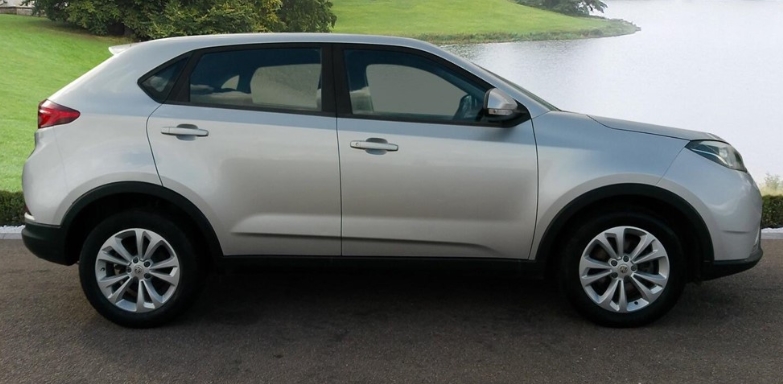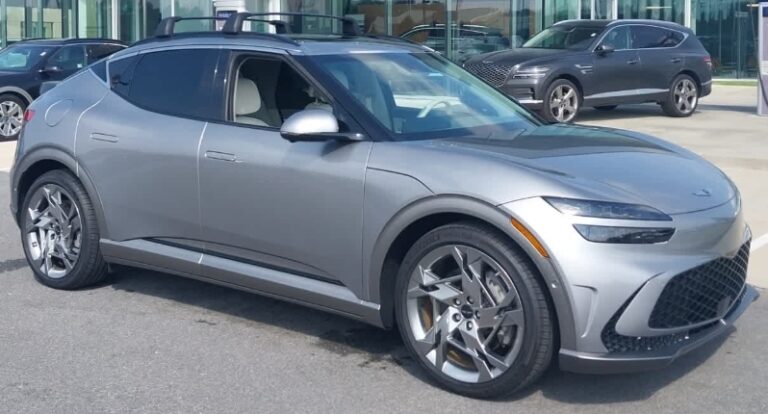The Pathfinder: Evolution of the MG GS
In the sprawling narrative of the modern automotive industry, few comeback stories are as compelling as that of MG. Resurrected from the ashes of its British past by the Chinese automotive giant SAIC Motor, the brand embarked on a mission to reinvent itself for a new century. This journey required a fundamental shift in identity, moving away from its heritage of nimble sports cars towards the mainstream, volume-selling segments. The most crucial battlefield of the 2010s was the booming C-segment SUV market, and MG’s first soldier in this war was a vehicle of immense significance: the MG GS. Produced globally from 2015 to 2020, and available in the UK from 2016 to 2019, the GS was more than just a car; it was a statement of intent, a learning curve, and the vital stepping stone that paved the way for the brand’s current success.
Genesis: From a Sharp Concept to a Softer Reality (2013-2015)
The story of the MG GS begins not on the production line, but at the 2013 Shanghai Auto Show. Here, MG unveiled the CS Concept, a sharply styled, aggressive-looking SUV that turned heads with its futuristic lights and dynamic “shard” creases. Designed at SAIC’s Longbridge design studio in the UK, the CS concept was a clear signal of where the brand was heading. It was a promise of a family-friendly vehicle that hadn’t forgotten MG’s sporting DNA.
Development of the production model took another two years. Built on SAIC’s new scalable SUV architecture, the final vehicle was inevitably toned down from the dramatic concept. The sharpest edges were softened, and the proportions were made more conventional to appeal to a wider family audience. Nevertheless, traces of the concept’s dynamic styling remained, particularly in the confident front grille, the angular headlights, and the rising beltline.
The production MG GS officially launched in China in early 2015. It arrived with a choice of two advanced turbocharged petrol engines: a 1.5-litre unit developed in collaboration with General Motors, and a more potent, in-house 2.0-litre powerplant, which could be optioned with all-wheel drive. This initial launch showcased the platform’s capability and SAIC’s technological ambition. However, the world, and particularly the UK, would have to wait another year for its arrival.
The UK Arrival: A New Challenger Enters the Fray (2016-2017)
In June 2016, the MG GS officially landed on British shores, marking a pivotal moment for MG Motor UK. It was the brand’s first-ever SUV, designed to compete head-on with established titans like the Nissan Qashqai, Kia Sportage, and Ford Kuga. To simplify its market entry and maintain a competitive price point, the UK lineup was streamlined. Only the 1.5-litre TGI turbocharged petrol engine was offered, producing a healthy 164 bhp and 250 Nm of torque. This gave the GS a performance advantage over many of its naturally aspirated rivals. Buyers could choose between a six-speed manual gearbox or a seven-speed dual-clutch automatic transmission (DCT).
The initial UK launch featured a straightforward three-tier trim structure, focusing heavily on value for money.
- MG GS Explore (2016-2019) The entry point to the GS range was aggressively priced to draw customers into showrooms. Despite its budget positioning, it came with a respectable level of standard equipment.
Years Produced: 2016 – 2019
Key Features:
17-inch alloy wheels
Cruise control
Automatic headlights
Air conditioning (manual)
LED daytime running lights
Fabric upholstery
Four electric windows
Bluetooth connectivity and a basic radio/CD player
The Explore was available exclusively with the six-speed manual gearbox and was designed to offer the space and practicality of an SUV for the price of a much smaller supermini.
- MG GS Excite (2016-2019) The mid-range Excite model was predicted to be the volume seller, adding desirable creature comforts and technological upgrades for a modest price increase.
Years Produced: 2016 – 2019
Key Features (in addition to Explore):
DAB radio
Rear parking sensors and reverse camera
Automatic climate control
MirrorLink smartphone connectivity (a precursor to Apple CarPlay/Android Auto)
A simple 6-inch colour touchscreen infotainment system
Like the Explore, the Excite was initially offered only with the six-speed manual transmission. It represented the sweet spot in the range, balancing cost with modern conveniences.
- MG GS Exclusive (2016-2019) The flagship model, the Exclusive, aimed to deliver a premium experience without a premium price tag. It packed in all the available technology and comfort features, making it a true bargain compared to top-spec rivals.
Years Produced: 2016 – 2019
Key Features (in addition to Excite):
Leather upholstery (with electrically adjustable and heated front seats)
iGO satellite navigation system integrated into the infotainment unit
Xenon headlights
Upgraded 18-inch alloy wheels
Front parking sensors
Crucially, the Exclusive was the only trim level where buyers could opt for the seven-speed DCT automatic gearbox, making it the most technologically advanced and luxurious version of the GS available in the UK.
The Mid-Life Refresh: Refinement and Technology (2017-2019)
As the SUV market continued to evolve at a breakneck pace, MG knew the GS couldn’t stand still. In late 2017, a facelifted version was introduced to keep the model fresh and better align its styling with the newly launched, smaller MG ZS. The changes were subtle but effective, refining the vehicle’s aesthetics and, more importantly, upgrading its interior technology.
The exterior updates were focused on the front end. The original horizontal-slat grille was replaced by a more dynamic, concave “stardust” grille, which became a signature of MG’s new design language. The front bumper was also restyled with new, more prominent fog light surrounds, giving the car a wider and more assertive stance.
Inside, the most significant upgrade was the infotainment system. Higher-spec models received a new, larger 8-inch colour touchscreen. This new unit was not only more responsive but also introduced Apple CarPlay and Android Auto compatibility. This was a game-changing update, instantly modernizing the cabin and addressing one of the earlier criticisms regarding its slightly dated connectivity options.
The trim level structure of Explore, Excite, and Exclusive remained the same, but the specification of each was enhanced. The Excite model, for instance, benefited most from the infotainment upgrade, making it an even more compelling proposition. While the core mechanicals—the 1.5-litre engine and gearbox options—remained unchanged, the facelift successfully improved the day-to-day user experience and brought the GS visually in line with its newer stablemates.
International Variations: The Other Faces of the GS
While the UK market received a focused, front-wheel-drive, 1.5-litre lineup, the MG GS was a more versatile vehicle in other parts of the world. In its home market of China, as well as in regions like Australia and the Middle East, the GS had a broader range of options that showcased the full potential of its platform.
The most notable of these was the 2.0-litre turbocharged petrol engine. This unit produced a formidable 217 bhp and 350 Nm of torque, transforming the GS into a genuinely rapid SUV, capable of 0-60 mph in around 8 seconds. This engine was typically paired with a six-speed wet-clutch DCT and, crucially, was available with an intelligent on-demand all-wheel-drive (AWD) system. This AWD version gave the GS all-weather capability and a level of performance that was never offered to UK buyers, positioning it as a more direct competitor to high-performance versions of the Volkswagen Tiguan or Ford Kuga.
.

.
Legacy and The End of an Era (2019)
Despite its strengths—a powerful engine, generous interior space, and an unbeatable price—the MG GS faced a tough battle in the UK and Europe. It was praised for its value and practicality, but critics often pointed to its firm ride, the occasionally hesitant nature of the DCT gearbox at low speeds, and interior plastics that couldn’t quite match the premium feel of its more established European and Japanese rivals.
By 2019, it was clear that the GS had fulfilled its purpose. It had successfully launched MG into the SUV segment, re-established the brand in the minds of family car buyers, and provided invaluable market feedback. It was a pathfinder, a vehicle that took the risks so that its successors wouldn’t have to.
Production for the UK market ceased in 2019, as the brand prepared to launch its replacement, the MG HS. The HS was a direct response to the lessons learned from the GS. It arrived with a vastly improved interior quality, a more comfortable and compliant ride, more sophisticated styling, and a higher level of standard technology. The success of the HS, and indeed the smaller ZS, owes a significant debt to the groundwork laid by the GS.
The MG GS may not be remembered as a class-leader or a bestseller, but its role in the evolution of modern MG is undeniable. It was the bold first step, the ambitious pioneer that bridged the gap between MG’s past and its electrified, tech-focused future. It proved that the famous octagonal badge could adorn the grille of a practical, family SUV and, in doing so, secured the brand’s place in the 21st-century automotive landscape.






